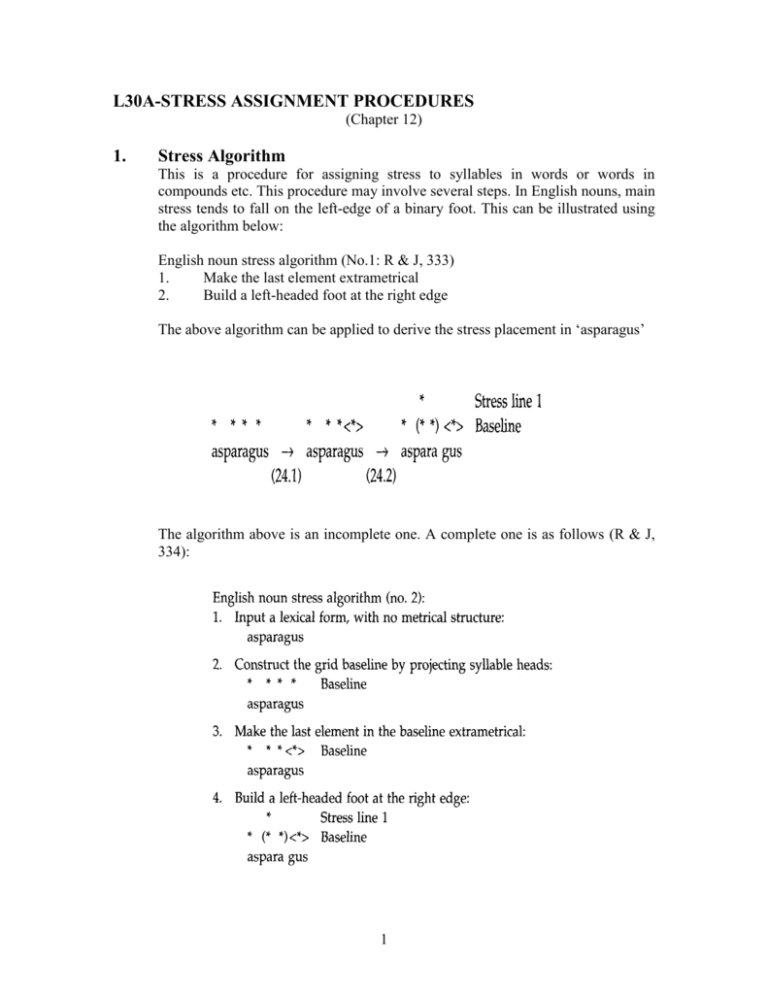STRESS ASSIGNMENT PROCEDURES & SYLLABLE WEIGHT
advertisement

L30A-STRESS ASSIGNMENT PROCEDURES (Chapter 12) 1. Stress Algorithm This is a procedure for assigning stress to syllables in words or words in compounds etc. This procedure may involve several steps. In English nouns, main stress tends to fall on the left-edge of a binary foot. This can be illustrated using the algorithm below: English noun stress algorithm (No.1: R & J, 333) 1. Make the last element extrametrical 2. Build a left-headed foot at the right edge The above algorithm can be applied to derive the stress placement in ‘asparagus’ The algorithm above is an incomplete one. A complete one is as follows (R & J, 334): 1 2. The above procedure has an implicit rule ordering and expresses a derivation. Use the above algorithm for the assignment of main stress in ‘hippopotamus’ Try same for trisyllabic, quadrisyllabic verbs and adjectives (use the data (27) in R & J, p.334 – 335). Does the algorithm produce the expected stress pattern? If not, propose alternative algorithm that will account for verbs in English. In verbs and underived adjectives, the extrametricality requirement is surpressed, allowing foot formation to begin from the rightmost syllable of the word. Consider the iterative foot construction and application of the algorithm to longer words which have multiple stress and unreduced vowels (p.335337) Multiple Stress (r & J, p.335-337) In longer words, in addition to main stress, there are other prominent syllables, these syllables do not reduce their vowels and are assigned secondary stress. 3. The addition of secondary stress requires a construction of another stress line (2) This addition requires us to fall back on an additional rule or parameter setting END Stress [Right] Direction of foot construction Direction of foot construction is not universal. Languages determine which direction feet are to be constructed. As we have seen, English favours right-left foot trochaic construction. Other languages do favour the opposite foot construction. Implicit in this is that languages have parameter settings which determine how to form the metrical foot 4. Stress Typology: Metrical Parameters (p. 338) The direction of foot construction and head location as stated in (3) above is set for each language. As a result part of the algorithm requires parameter settings information for proper stress assignment. The parameter setting is as follows: Foot head location: Construction direction: Extrametricality: Left/Right Right-to-left/Left-to-right Yes(right/left)/no Work out the settings for English nouns and verbs Provide a derivation for the word ‘asparagus’, following that in p.339 2 Degenerate feet may be allowed in some languages, but not in others. For example, Yidin doesn’t allow degenerate feet, but Maranungku does. Left extrametricality is uncommon, but is found in native American languages such as Winnebago, for example (p.341): 3







